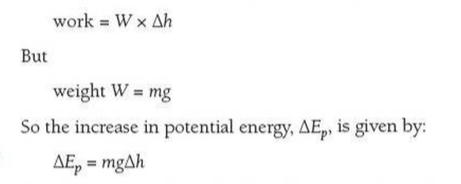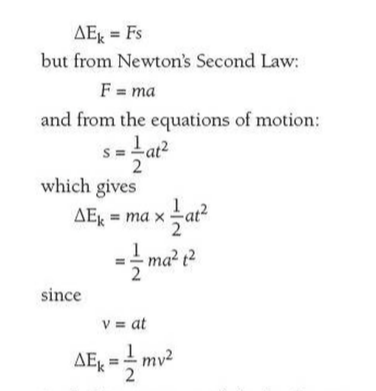Calculating the Energy
Summary
⇒ When work is done against resistive forces (e.g. when the suitcase is moved at the airport), that work is transferred to heat energy
⇒ Therefore, the wheels of the suitcase and the surroundings warm up a little bit
⇒ Work can be done to transfer energy into other forms
Gravitational Potential Energy

⇒ A load with weight (W) has been lifted through a height (h)
⇒ The work done = increase in gravitational potential energy

⇒ Note that we use the triangle symbol to indicate a change in energy and height. There is no defined zero point of gravitational potential energy on the Earth, so we talk about changes.
Elastic Potential Energy
⇒ Elastic potential energy (Eep) is stored in a stretched wire or rubber band. The following shows how a rubber band may be stretched...

⇒ When it is released it can convert its stored energy into the kinetic energy of a puck, which slides along the runway

⇒ This graph shows that the force required to strech the band back depends on the distance it is pulled back
⇒ Because the force changes we have to use the average force to calculate the energy stored

⇒ In this case, where the force to stretch the band is proportional to the distance moved:

⇒ The stored elastic potential energy can also be calculated more generally using the area under the force-extension graph
Kinetic Energy

⇒ Here, a constant force (F) accelerates a car, starting at rest, over a certain distance (s)
⇒ Work is done to increase the kinetic energy of the car - we can use this to find a formula for kinetic energy in terms of the car's speed and mass

⇒ So the kinetic energy of a body of a mass (m) moving at a velocity (v) is given by: Ek = 0.5mv2
- Note this is a scalar quantity because v2 has no direction
Extra
⇒ Also see our notes on: